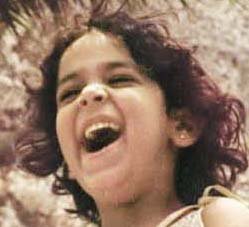
Chinese cities are a lot like Indian ones. Always bustling and full of people. When you’re in a good mood, they seem vibrant and full of infectious energy, but when you’re tired, they’re noisy and exhausting and all you want to do is get away. It was on one such formidably sunny day in Shanghai that we slipped away to Wuxi for an overnight trip.
Wuxi is the home of the Lingshan Grand Buddha — an 88-metre-high bronze statue of Sakyamuni Buddha — the largest Buddha statue anywhere in the world. It was built only in 1996, but is already very popular not just among Buddhists, but other tourists as well. So you’re likely to encounter crowds here as well. But don’t worry, the serene and large grounds some how just swallow them up.
I couldn’t have asked for better weather when I visited. The sun hid behind the clouds and a light drizzle made the surrounding hillside cool and green. Standing beside the Maji mountain, facing the Taihu lake, the statue made for a majestic sight. But the best part was that it wasn’t the only thing there that caught my eye. At every step right from the entry to the 216 steps that lead up to the statue, there was yet another glimpse from the life of Buddha.
Like the massive bronze pillar, topped with a lotus bud, that you see, as soon as you enter. Four times a day, this opens up to the accompaniment of specially-composed music and a fountain show, to tell the story of Buddha’s birth. Or the statue of the laughing Buddha — if you manage to toss a coin into his mouth, you can be sure of good luck for the rest of the year.
There are engraved scenes from Buddha’s years of meditation in the forest, a temple for the faithful, and a 12-metre-high hand, an exact replica of the one on the statue, that you can pat and walk around for blessings.
But while the sights were fascinating, the best part was the secular nature of the place. It was both a pilgrimage for Buddhists and a sightseeing spot for tourists. There were people posing for photos and buying souvenirs. And there were those who knelt, shut their eyes and prayed. And still others, who came to sightsee, but stayed a little longer to light a few candles.

The long flight of stairs (216 steps) leading to the giant statue is called the ‘Ascending to the Clouds Route’.

The Lingshan Giant Buddha is 88 metres or 250 feet tall, which makes it about a 100 feet taller than the Statue of Liberty; Rubbing the toes of the statue brings good luck.

Turning a cylinder once is the equivalent to reciting the scriptures once. You can walk around the Sutra-turning corridor and turn the 108 cylinders to earn blessings.
The fountain show called the ‘Bathing by Nine Dragons’ takes place four times a day. While the rest of the pillar is bronze, the baby Buddha statue placed inside the lotus is gold-plated.
The statue of the plump Maitreya Buddha and the babies tickling him are a traditional expression of people’s wishes for a happy and prosperous future. Managing to toss a coin into his mouth brings luck.
An engraving that shows how Buddha meditated under a Bodhi tree for seven days and nights, suppressing the inner devils.
During the construction, when the hand was left sitting at the site for a while, people began burning incense to the hand and rubbing it to show their devotion. Seeing its popularity, the administrators left the palm there and a cast a new one for the statue. A version of this was published in the Hindustan Times on September 28.
A version of this was published in the Hindustan Times on September 28.

3 comments:
N, am doing some admin stuff for Desi Pundit and we need your email. Would you mind shooting me an email from the contact form on my blog (don't want to leave an email open here). Much appreciated!
Hi ,
I was reading ur blog posts and found some of them to be very good.. u write well.. Why don't you popularize it more.. ur posts on ur blog ‘random rambles’ took my particular attention as some of them are interesting topics of mine too;
BTW I help out some ex-IIMA guys who with another batch mate run www.rambhai.com where you can post links to your most loved blog-posts. Rambhai was the chaiwala at IIMA and it is a site where users can themselves share links to blog posts etc and other can find and vote on them. The best make it to the homepage!
This way you can reach out to rambhai readers some of whom could become your ardent fans.. who knows.. :)
Cheers,
Happy Diwali, n!
:)
emit
Post a Comment